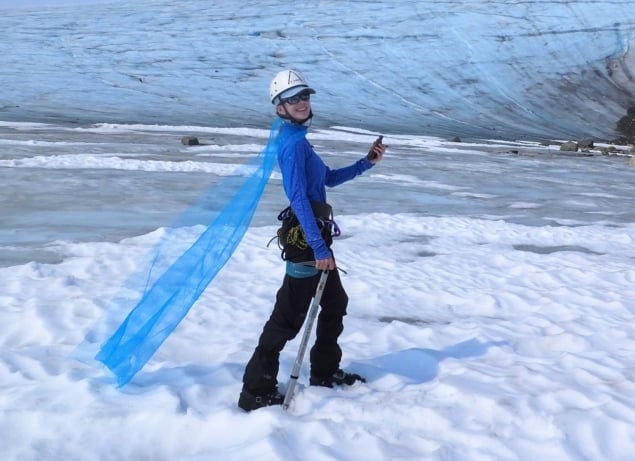
When Celeste Labedz – a geophysics PhD student from the California Institute of Technology – took to Twitter to upload a photo of herself on a field trip to Juneau Icefield in Alaska, she wasn’t quite expecting the level of attention it would garner. The photo shows Labedz standing on a glacier dressed as the fictional character Princess Elsa from Disney’s hit-film Frozen. To create “glaciologist Princess Elsa”, Labedz packed a blue cape in her backpack that was originally made for a Halloween costume. When the team were having a break from their work, she put it on and posed for the photo and then uploaded it to social media when she returned from the trip.
“I firmly believe that kids should NOT be taught that girly things & science-y things are mutually exclusive. Therefore, I packed a cape with my field work gear just to show what Glaciologist Princess Elsa would look like!” she wrote on Twitter. The Tweet soon racked up over 10,000 likes and over 2000 retweets and even prompted other scientists to showcase their pictures as well as parents to say how helpful the image was for children needing a role model. Let it go (viral)!
Physicists at Emory University in the US have studied the fluid mechanics of giant bubbles — those that have a volume of nearly 100 m3. The current record for a free-floating soap bubble is 96.27 m3, which gives a diameter of 5.7 m and a surface area of 101 m2 for a perfectly spherical bubble. But with a film thickness of just a few microns how are these giant bubbles created and why don’t they instantly pop?
The physicists have applied fluid mechanics to the problem, finding that the addition of long-chain polymer molecules such as those found in lubricants and guar gum – a thickening agent extracted from guar beans — can dramatically increase the lifetime of the film even under “high molecular weights”. Another technique – known as “pH buffering” – is to add baking power to the bubble solution, but the researchers say that this mostly extends the solution’s shelf life by stopping it from clumping.
Finally, Rhett Allain has looked at the physics of an “epic pitch” that was thrown by Oliver Drake of the Tampa Bay Rays in a match against the Chicago White Sox last month. Allain’s model shows the ball could have curved as much as 1 m horizontally, but looking at the video it seems like Drake manages even more than that.



